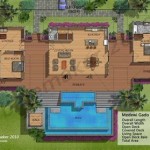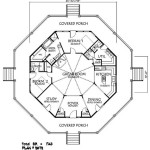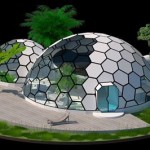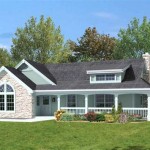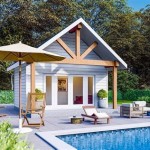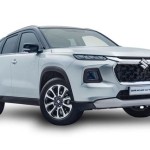Affordable home plans are blueprints designed to help individuals and families build affordable homes. These plans often incorporate cost-effective construction methods, energy-efficient designs, and materials to reduce building expenses, making homeownership more accessible.
For example, a family with a limited budget might choose a house plan that features a smaller footprint, open floor plan, and limited amenities to minimize construction costs and maximize livability within their financial means.
In this article, we will delve into various house plans for affordable homes, exploring their key features, benefits, and considerations for those seeking to achieve homeownership without breaking the bank.
When considering house plans for affordable homes, several important points to keep in mind include:
- Cost-effective materials
- Energy-efficient designs
- Smaller footprints
- Open floor plans
- Limited amenities
- Prefabricated components
- Smart home technology
- Sustainable features
- Customization options
By incorporating these elements into their house plans, individuals and families can build affordable homes that meet their needs without sacrificing quality or comfort.
Cost-effective materials
When it comes to building an affordable home, selecting cost-effective materials is crucial. These materials can significantly reduce construction costs without compromising the quality or durability of the home. Here are some examples of cost-effective materials commonly used in house plans for affordable homes:
Concrete blocks: Concrete blocks are a durable and affordable building material that can be used for both interior and exterior walls. They are fire-resistant, termite-proof, and provide good insulation, which can help reduce energy costs in the long run.
Steel framing: Steel framing is another cost-effective alternative to traditional wood framing. Steel is strong, durable, and resistant to fire, pests, and rot. It can also be prefabricated, which can save time and labor costs during construction.
Recycled materials: Using recycled materials, such as reclaimed wood or metal, can be a sustainable and cost-effective way to build an affordable home. These materials are often available at a lower cost than new materials and can add a unique character to the home.
Energy-efficient windows and doors: Energy-efficient windows and doors can help reduce energy costs by preventing heat loss in the winter and heat gain in the summer. Look for windows and doors with a high Energy Star rating, which indicates that they meet specific energy-efficiency standards.
In addition to the materials mentioned above, there are several other cost-effective materials that can be used in house plans for affordable homes. These include:* Structural insulated panels (SIPs)* Insulated concrete forms (ICFs)* Rammed earth* Straw bales* BambooBy carefully selecting cost-effective materials, individuals and families can build affordable homes that are durable, energy-efficient, and sustainable.
Energy-efficient designs
Incorporating energy-efficient designs into house plans for affordable homes is crucial for reducing energy consumption and lowering utility bills. These designs can help regulate indoor temperatures, improve air quality, and minimize the home’s environmental impact.
- Proper insulation
Adequate insulation in walls, ceilings, and floors is essential for energy efficiency. Insulation helps trap heat inside the home during winter and prevents heat from entering during summer, reducing the need for heating and cooling systems.
- Energy-efficient windows and doors
Windows and doors are potential sources of heat loss and gain. Energy-efficient windows and doors are designed to minimize heat transfer, reducing the amount of energy needed to maintain a comfortable indoor temperature.
- Passive solar design
Passive solar design involves orienting the home to take advantage of natural sunlight for heating and lighting. Large windows on the south side of the home allow sunlight to enter during winter, while overhangs and awnings can block the sun during summer to prevent overheating.
- Efficient appliances and lighting
Energy-efficient appliances and lighting can significantly reduce energy consumption. Look for appliances with the Energy Star label, which indicates that they meet specific energy-efficiency standards. LED lighting is also a highly energy-efficient option.
By incorporating these energy-efficient designs into house plans, individuals and families can build affordable homes that are comfortable, healthy, and environmentally friendly.
Smaller footprints
Building homes with smaller footprints is an effective way to reduce construction costs and make homes more affordable. Smaller homes require less land, materials, and labor to build, which can save significant money.
- Reduced land costs
Land is often one of the most expensive components of building a home. By choosing a smaller footprint, individuals and families can reduce the amount of land they need, which can lead to substantial savings.
- Less materials required
Smaller homes require less building materials, such as lumber, concrete, and roofing. This reduction in materials can lower the overall construction costs.
- Lower labor costs
Building a smaller home requires less labor, which can save money on labor costs. This is because smaller homes take less time to frame, finish, and complete.
- Faster construction time
Smaller homes can be built more quickly than larger homes, which can reduce construction time and associated costs.
It is important to note that building a smaller home does not necessarily mean sacrificing comfort or functionality. By carefully planning the layout and using space-saving design techniques, individuals and families can create smaller homes that are both affordable and livable.
Open floor plans
Open floor plans are becoming increasingly popular in house plans for affordable homes. They offer several advantages that can help reduce construction costs and create a more spacious and inviting living environment.
- Reduced material costs
Open floor plans often eliminate the need for walls between different rooms, such as the living room, dining room, and kitchen. This can save on the cost of materials, such as drywall, paint, and trim.
- Simplified construction
Fewer walls also mean less framing and finishing work, which can simplify construction and reduce labor costs.
- Increased natural light
Open floor plans allow for more natural light to penetrate the home, reducing the need for artificial lighting and creating a brighter and more inviting living space.
- Improved air flow
Without walls to obstruct air flow, open floor plans promote better ventilation and air circulation, which can improve indoor air quality and comfort.
In addition to these advantages, open floor plans can also make homes feel more spacious and connected. By removing visual barriers between different areas of the home, open floor plans create a sense of flow and continuity, which can be especially beneficial in smaller homes.
However, it is important to note that open floor plans are not suitable for all homes. For example, families with young children or those who value privacy may prefer homes with more traditional floor plans that offer separate rooms for different activities.
Limited amenities
In order to keep construction costs down, house plans for affordable homes often include a limited number of amenities. This does not mean that these homes are lacking in comfort or functionality, but rather that they focus on the essential features that families need most.
- Smaller kitchens
Kitchens in affordable homes are often smaller than those in more expensive homes. This can save on the cost of materials and labor, and it can also make the kitchen feel more cozy and intimate. However, smaller kitchens may have less counter space and storage, so it is important to carefully plan the layout to ensure that everything has a place.
- Fewer bathrooms
Affordable homes may have fewer bathrooms than more expensive homes. This can save on the cost of plumbing and fixtures, and it can also make the home easier to clean and maintain. However, it is important to consider the needs of the family when deciding how many bathrooms to include in the home.
- Limited outdoor space
Affordable homes may have less outdoor space than more expensive homes. This can save on the cost of land and landscaping, and it can also make the home easier to maintain. However, it is important to consider the family’s lifestyle when deciding how much outdoor space to include in the home.
- Basic finishes
Affordable homes may have more basic finishes than more expensive homes. This can save on the cost of materials and labor, and it can also make the home easier to maintain. However, it is important to choose finishes that are durable and easy to clean, so that the home will look its best for years to come.
By carefully considering the amenities that are most important to them, families can build affordable homes that meet their needs without breaking the bank.
Prefabricated components
Prefabricated components are a great way to save time and money on the construction of affordable homes. These components are manufactured in a factory and then shipped to the construction site, where they are assembled. This process can be much faster and more efficient than traditional construction methods, which can lead to significant savings.
- Reduced labor costs
Prefabricated components are often assembled by skilled workers in a factory setting, which can reduce labor costs compared to traditional construction methods. This is because factory workers are typically paid less than construction workers, and they can work more efficiently in a controlled environment.
- Faster construction time
Prefabricated components can be assembled much more quickly than traditional construction methods. This is because the components are manufactured in a factory and then shipped to the construction site, where they are simply assembled. This can save months off the construction timeline, which can lead to earlier occupancy and reduced carrying costs.
- Improved quality control
Prefabricated components are manufactured in a controlled factory environment, which allows for better quality control than traditional construction methods. This is because the components are made to precise specifications and are inspected before they are shipped to the construction site.
- Reduced waste
Prefabricated components can help to reduce waste on the construction site. This is because the components are manufactured to precise specifications, which means that there is less waste material. Additionally, the factory setting allows for better waste management practices, such as recycling and composting.
In addition to the benefits listed above, prefabricated components can also help to improve the energy efficiency and durability of affordable homes.
Many prefabricated components are made with sustainable materials and are designed to be energy efficient. For example, prefabricated walls can be insulated with high-performance insulation, and prefabricated windows and doors can be made with energy-efficient glazing.
Prefabricated components can also be designed to be more durable than traditional construction methods. For example, prefabricated walls can be made with stronger materials and are often built to withstand high winds and earthquakes.
Overall, prefabricated components offer a number of advantages for the construction of affordable homes. These components can save time and money, improve quality control, reduce waste, and enhance energy efficiency and durability.
Smart home technology
Smart home technology can be integrated into house plans for affordable homes to provide convenience, security, and energy efficiency. These technologies allow homeowners to control and monitor their homes remotely, automate tasks, and reduce energy consumption.
- Smart thermostats
Smart thermostats allow homeowners to control the temperature of their homes remotely using a smartphone app. They can be programmed to adjust the temperature automatically based on the time of day, day of the week, and even the weather. This can lead to significant energy savings, as the thermostat can be set to lower the temperature when the home is unoccupied or when the weather is mild.
- Smart lighting
Smart lighting allows homeowners to control the lights in their homes remotely using a smartphone app. They can be programmed to turn on and off automatically based on the time of day, day of the week, or even the presence of occupants. This can lead to energy savings, as the lights can be turned off when they are not needed.
- Smart appliances
Smart appliances can be controlled and monitored remotely using a smartphone app. This allows homeowners to start, stop, and adjust the settings of their appliances from anywhere. For example, a homeowner could start the dishwasher before leaving for work or preheat the oven on the way home from the grocery store.
- Security systems
Smart security systems can be monitored and controlled remotely using a smartphone app. They can be programmed to send alerts to the homeowner’s smartphone if there is an intrusion or if a smoke or carbon monoxide detector is activated. This can give homeowners peace of mind, knowing that their home is being monitored even when they are away.
In addition to the benefits listed above, smart home technology can also make homes more accessible for people with disabilities. For example, smart home systems can be used to control lights, appliances, and thermostats using voice commands or hand gestures.
Overall, smart home technology offers a number of advantages for affordable homes. These technologies can provide convenience, security, energy efficiency, and accessibility.
Sustainable features
Sustainable features can help to reduce the environmental impact of affordable homes while also providing cost savings over time. These features can include energy-efficient appliances, renewable energy sources, and water-saving fixtures.
- Energy-efficient appliances
Energy-efficient appliances use less energy to operate, which can lead to significant savings on utility bills. When choosing appliances for an affordable home, look for models with the Energy Star label. This label indicates that the appliance meets certain energy-efficiency standards.
- Renewable energy sources
Renewable energy sources, such as solar panels and wind turbines, can be used to generate electricity and heat for affordable homes. These systems can reduce reliance on fossil fuels and lower energy costs. However, it is important to consider the upfront cost of installing renewable energy systems and whether there are any government incentives available to offset the cost.
- Water-saving fixtures
Water-saving fixtures, such as low-flow toilets and faucets, can help to reduce water consumption and lower water bills. These fixtures are designed to use less water without sacrificing performance.
- Sustainable building materials
Sustainable building materials are made from renewable or recycled materials and have a low environmental impact. These materials can include bamboo, recycled steel, and reclaimed wood. Using sustainable building materials can help to reduce the environmental impact of affordable homes and create a healthier living environment.
In addition to the benefits listed above, sustainable features can also increase the value of affordable homes. As more and more people become interested in living sustainably, homes with sustainable features are becoming more desirable.
Overall, sustainable features offer a number of advantages for affordable homes. These features can help to reduce energy costs, water consumption, and environmental impact, while also increasing the value of the home.
Customization options
Customization options allow individuals and families to tailor house plans for affordable homes to their specific needs and preferences. These options can include:
- Floor plan modifications
Floor plan modifications allow homebuyers to change the layout of the home to better suit their needs. For example, they may want to add or remove a bedroom, change the size of a room, or move a wall. Floor plan modifications can be made to any type of home, but they are most common in affordable homes, where every square foot counts.
- Exterior design changes
Exterior design changes allow homebuyers to customize the look of their home. These changes can include changing the siding, roofing, windows, or doors. Homebuyers can also choose to add or remove features such as a porch, deck, or garage. Exterior design changes can help to make an affordable home more unique and personal.
- Interior finishes
Interior finishes allow homebuyers to choose the materials and colors used inside their home. These finishes can include flooring, paint, countertops, and cabinets. Homebuyers can choose finishes that match their personal style and that will make their home feel like their own.
- Appliance and fixture upgrades
Appliance and fixture upgrades allow homebuyers to choose the appliances and fixtures that they want in their home. These upgrades can include items such as a new refrigerator, stove, dishwasher, or washer and dryer. Homebuyers can also choose to upgrade to more energy-efficient appliances and fixtures, which can save them money on their energy bills in the long run.
Customization options are a great way to make an affordable home more unique and personal. They allow homebuyers to create a home that meets their specific needs and preferences, and that reflects their own style. However, it is important to note that customization options can also add to the cost of the home. Therefore, it is important to carefully consider which customization options are most important to you and to budget accordingly.





/bnn/media/media_files/529daa3273bf059fce2cc6d283a270543bfc5126a3bd7e51533e2938dd13a62a.jpg)




Related Posts

